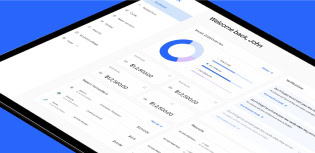Your guide to corporate card reconciliation across departments

About PEX
- 657 hours saved each year on manual finance tasks
- $35K in equivalent labor cost savings annually
- A 10.85% ROI through automation and efficiency gains
When finance teams roll out corporate cards across departments, the goal is efficiency. But what often happens is the opposite.
Take CultureWorks, for example. The arts management hub expanded spending across subdivisions with one shared debit card. Finance was left chasing receipts across programs, slowing the close and increasing risk.
CultureWorks isn’t the exception. Finance teams across industries face the same challenge: expanding spending across multiple departments while maintaining control. In fact, nearly half of CFOs identified efficiency, technology transformation and cost management as their top internal risks—underscoring just how widespread this struggle has become.
This guide will help finance leaders streamline corporate card reconciliation, transforming it from a back-office bottleneck into a strategic advantage. Let’s start by exploring why reconciling spend across departments can be a persistent struggle.
The challenge of reconciling corporate card spend across departments
As spending privileges expand across departments, finance leaders face not just higher transaction volumes; they’re also dealing with increasing fragmentation. Receipts go missing, submissions arrive late and vague descriptions snowball into organization-wide slowdowns.
Part of the problem is structural. Department heads often prioritize speed and flexibility for their teams, while finance prioritizes oversight and accuracy. Marketing could approve software subscriptions without review or operations might pass through travel that violates policy. Each department is acting rationally, but the organization as a whole suffers from fragmented data and inconsistent controls.
These challenges don’t just slow down the close; they obscure financial health. If spend data isn’t reconciled promptly and accurately, finance teams can’t provide leadership with up-to-date insights. That delay makes it harder to forecast cash flow, manage risk or adjust budgets mid-quarter. In an environment where speed and accuracy are both critical, manual, decentralized reconciliation becomes a liability. But the good news is that these challenges aren’t inevitable.
What are best practices for corporate card reconciliation?
Getting reconciliation right starts with a strong foundation. Finance leaders don’t need complex fixes. They need consistent, organization-wide practices that build accountability, accuracy and speed in every department.
Proactive communication of deadlines and policies
Expense policies only work if people know and understand them. Regular reminders about reporting deadlines and rules keep everyone on track and reduce last-minute scrambles.
Standardized workflows across departments
When every team follows the same submission process, reconciliation becomes repeatable and reduces confusion for employees moving between projects
Department-level spend rules with clear accountability
Autonomy doesn’t mean a free-for-all. Setting limits on categories, amounts or vendors at the department level empowers teams to act quickly while keeping spend aligned with budgets.
Defined approval hierarchies
Every transaction should have a clear path to the approving manager. Defined hierarchies prevent bottlenecks and stop expenses from slipping through the cracks.
Centralized visibility through shared dashboards
Finance should have real-time dashboards pulling card activity across teams to eliminate blind spots and give leadership a consolidated mid-cycle view.
Integration with ERP systems
Best practice means ensuring data flows into the GL. Direct integrations cut manual entry, prevent errors and speed the close.
Ongoing training and reinforcement
Even the best policies erode. Regular refreshers in meetings or onboarding help maintain compliance as organizations grow.
Organizations that adopt these practices often see their month-end close times shrink dramatically. With fewer errors and clearer visibility into department-level spend, finance teams have the control they need to advise the business with confidence.
How automated reconciliation creates centralized oversight
The best practices mentioned above take time and effort. They require that finance leaders build and communicate spending frameworks. This is a great first step, but then reality hits. Employees forget to review documentation, skip steps or ignore reminders—leaving finance in constant cleanup mode.
Automation embeds rules directly into each transaction. Real-time prompts appear if receipts are missing, GL codes required or purchases fall outside guidelines. AI matches receipts to transaction records. Compliance happens naturally, without manual follow-ups.
Standardization means every department follows the same process, with spend limits and category-based rules enforced before purchases happen. Approvals route directly to the right reviewer, whether there’s one or three levels of approval required. Routing prevents delays and missed checks.
Dashboards and ERP integrations give live visibility into budgets and exceptions, so leaders see spend in motion and address risks early. Real-time feedback flags errors and guides corrections, reinforcing policies without extra effort.
The result: reconciliation shifts from a reactive cleanup to a proactive, centralized system, supporting faster decisions and stronger financial oversight.
Your action plan to streamline multi-department reconciliation
A smoother reconciliation process doesn’t happen overnight, but finance leaders can start making progress with a focused plan.
- Map your current workflows: Document how each department submits receipts, codes expenses and gets approvals. Identify points of friction that cause delays and gaps at month-end.
- Standardize processes across teams: Define a single, organization-wide workflow for expense submissions and approvals. Clear, consistent rules eliminate confusion and ensure that every department follows the same playbook.
- Set department-level policies: Balance autonomy with control by tailoring rules to each team. Limit marketing’s ad spend by vendor or category, while giving operations more flexibility for travel and logistics. Department-specific guidelines reduce risk without slowing the business down.
- Automate wherever possible: Introduce tools that embed compliance into every transaction, matching receipts automatically, applying GL codes and flagging exceptions in real time. Automation makes policy enforcement part of the submission process.
- Monitor, adjust and reinforce: Leverage real-time dashboards to track spend continuously. Share insights with department heads, refine workflows when patterns emerge and reinforce accountability through proactive communication.
- Map current workflows across departments
- Standardize expense submission processes
- Set tailored department-level spend rules & approval hierarchies
- Automate receipt capture and policy enforcement
- Monitor spend with real-time dashboards
Simplifying corporate card reconciliation with PEX
Corporate card reconciliation doesn’t have to mean endless manual monitoring and cleanup. With PEX, finance leaders set the rules and workflows once, defining spend policies, approval paths and coding standards. Automation applies the rules in real time, flagging exceptions. Finance steps in only for updates or unusual activity.
Here’s how PEX customers have made the shift:
- CultureWorks replaced a single shared debit card with department-specific cards, which paired clear rules with automation and saved hours each month on reconciliation. Automated coding and receipt capture meant the finance team could close faster and spend less time chasing paperwork.
- Each of Skeehan & Young’s clients were passing around one corporate card, leaving the firm chasing receipts and untangling expenses. By shifting to individual cards and automated coding, every purchase tied back to the right person and category. That shift now saves more than 8 hours of admin time per client at month-end.
- Family in Christ Community Church lowered the risk of overspending across ministries by applying custom rules to each card, restricting spend by merchant, category and amount. Real-time dashboards gave leaders accountability and visibility across programs, and slashed time spent by 93%.
Beyond individual stories, PEX customers consistently report measurable savings, including:
- 4.01 minutes getting receipts from employees per transaction (PEX customer success webinar, Q3 2024)
- 3.47 minutes uploading receipts per transaction
- 2.92 minutes adding GL codes to each transaction
By leveraging PEX’s automated reconciliation and spend controls, finance teams can cut hours of manual work and gain real-time control over spend. Ready to do the same? Explore PEX today.
Similar resources
Opinions, advice, services, or other information or content expressed or contributed here by customers, users, or others, are those of the respective author(s) or contributor(s) and do not necessarily state or reflect those of The Bancorp Bank, N.A. (“Bank”). Bank is not responsible for the accuracy of any content provided by author(s) or contributor(s).








